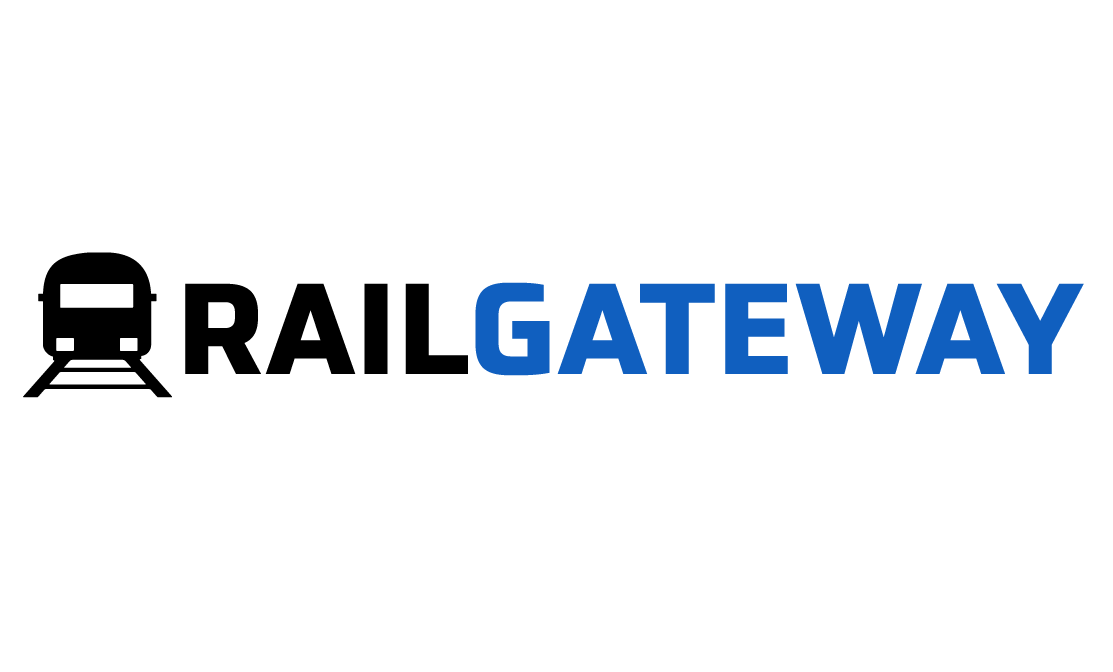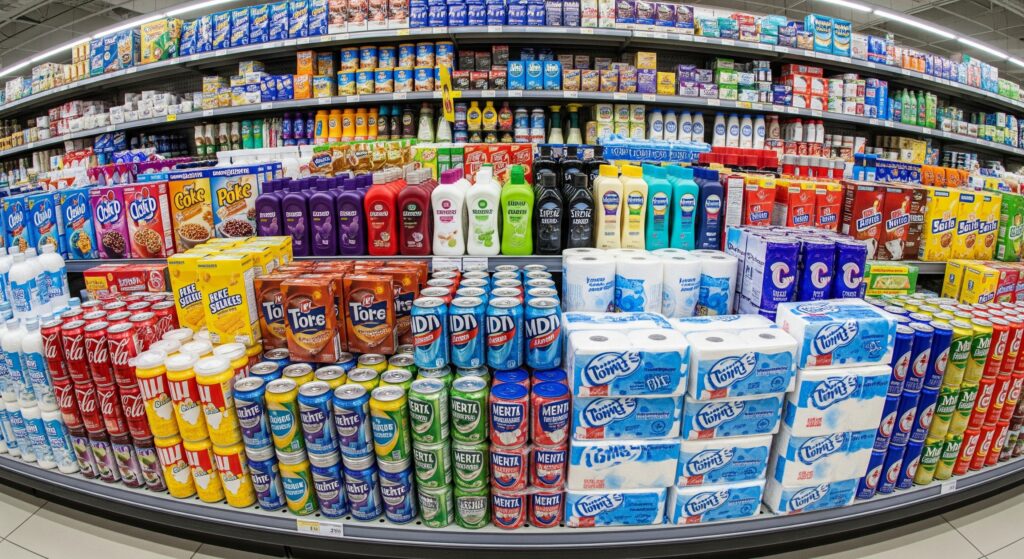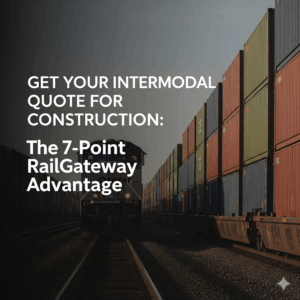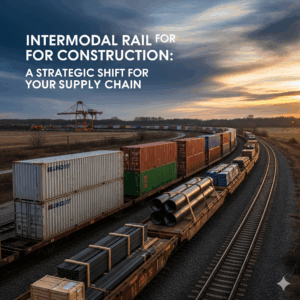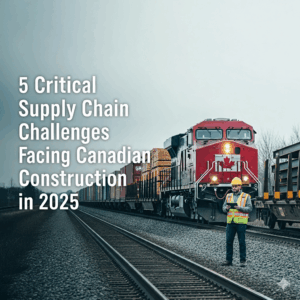The Critical Decision Point for CPG Logistics
Your journey to optimize your retail supply chain has brought you to a crucial crossroads. You’ve moved past the initial awareness of intermodal rail shipping and understand its potential. You know it’s a powerful strategy for building a more cost-effective and resilient network. Now, you face the pivotal question that every CPG supply chain leader must answer: When does the established, familiar process of Full Truckload (FTL) shipping make the most sense, and when does a strategic shift to an integrated intermodal model offer a superior business case for our products?
This is not a question with a simple answer. It requires a nuanced analysis that weighs the tactical flexibility of trucking against the structural efficiencies of rail. For a Consumer Packaged Goods (CPG) company, where success is measured by on-time delivery scores, the cost-per-case, and the ability to navigate brutal seasonal demand spikes, making the right choice has a direct and profound impact on your profitability and your relationships with major retail partners.
This guide is designed for this critical evaluation phase. We will go beyond the basics to provide a direct, factor-by-factor comparison of intermodal rail shipping versus FTL, viewed specifically through the lens of the CPG industry’s unique pressures. Our goal is to provide a clear framework to help you make a data-driven decision that will strengthen your supply chain for years to come.

The Core Financial & Performance Comparison
Let’s start by analyzing the two modes across the metrics that most directly impact your P&L and your supplier scorecard: cost, delivery performance, and capacity.
Factor 1: Total Landed Cost & Margin Protection
In the CPG world, margins are notoriously thin. The transportation cost embedded in every case of product you ship is a critical variable that can make or break profitability. While FTL offers simple, transparent pricing, it is often not the most cost-effective solution for the high-volume, long-distance moves that define a national retail supply chain.
- The FTL Cost Model: The cost of a dedicated truck is largely linear, driven by a per-mile rate and a volatile fuel surcharge. For the long journey from a manufacturing plant in Ontario to a retail distribution center in Alberta, these costs are substantial.
- The Intermodal Cost Model: An intermodal move is priced differently, with a charge for the initial truck move to the rail yard (drayage), the long-haul rail journey, and the final delivery truck move. The economic advantage is overwhelmingly concentrated in the rail portion. The immense fuel and labor efficiency of a train allows for a much lower cost-per-mile on the longest segment of the trip.
Let’s analyze a typical CPG lane: Brampton, ON to Calgary, AB (Approx. 3,400 km)
| Cost Component | Full Truckload (FTL) | Intermodal Shipping | Analysis |
| Line-Haul Rate | ~$5,500 | ~$3,500 | The structural efficiency of rail over this long distance provides thousands in savings on the core transportation cost. |
| Fuel Surcharge (FSC) | ~$1,100 | ~$550 | The 4x fuel efficiency of rail means the FSC is dramatically lower and more stable, protecting your budget from energy price shocks. |
| Drayage (First/Last Mile) | N/A | ~$600 | This is the “cost of entry” for intermodal, but it is easily offset by the massive line-haul and fuel savings on this lane. |
| Total Estimated Cost | ~$6,600 | ~$4,650 | ~30% Estimated Savings with Intermodal |
Export to Sheets
Note: These are illustrative estimates for educational purposes. Actual market rates vary.
A 30% reduction in transportation cost for a key lane is a game-changer for any CPG company. It allows for more competitive pricing, funds promotional activities, or flows directly to the bottom line, strengthening the financial health of the business.
Factor 2: On-Time-In-Full (OTIF) Performance
For any CPG supplier, your OTIF score is your reputation. Major retailers like Walmart, Loblaws, and Amazon have incredibly strict Must-Arrive-By-Date (MABD) windows. A missed appointment doesn’t just result in a costly financial penalty (a chargeback); it damages your supplier scorecard, which can impact future purchasing decisions. The key to hitting these windows is not just speed, but predictability.
- The FTL Variability Risk: A dedicated truck can be very fast, but its transit time is subject to a high degree of variability. Highway congestion, weather closures, border delays, and driver hours-of-service limitations can all turn a 3-day trip into a 4-day trip with little notice, causing you to miss your MABD.
- The Intermodal Predictability Advantage: Intermodal shipping shines by offering a highly predictable and reliable transit schedule. Trains operate on a fixed, 24/7 schedule that is immune to highway traffic. While the door-to-door journey may be scheduled for a day longer than a perfect FTL run, its arrival at the destination terminal is remarkably consistent. This predictability is a massive strategic advantage. It allows your logistics partner to book a delivery appointment with the retail DC with a high degree of confidence days in advance. Knowing your container will be available on Wednesday morning makes it simple to secure and hit a Wednesday afternoon delivery window, protecting your OTIF score and your relationship with your most important customer.
Factor 3: Conquering Peak Season Capacity Crunches
The retail supply chain is defined by extreme seasonality. The massive surge in demand for beverages in the summer or for all goods in Q4 creates intense competition for a finite number of trucks and drivers.
- The FTL Spot Market Gamble: If your strategy relies on sourcing trucks from the spot market during these peak periods, you are entering a high-risk, high-cost environment. Trucking rates can skyrocket by 50% or more, and even then, there is no guarantee you will find a carrier. This can lead to service failures and lost sales during your most critical selling season.
- The Intermodal Capacity Solution: A strategic intermodal rail shipping plan is the definitive solution to this cyclical challenge. Because the rail network is built for immense volume, it is far less susceptible to these seasonal capacity shortages. By working with a logistics partner, you can forecast your peak season needs and secure dedicated intermodal capacity at a contracted rate months in advance. While your competitors are frantically bidding for overpriced trucks, your product is flowing smoothly and cost-effectively to your customers, allowing you to capture market share and maximize revenue when it matters most.
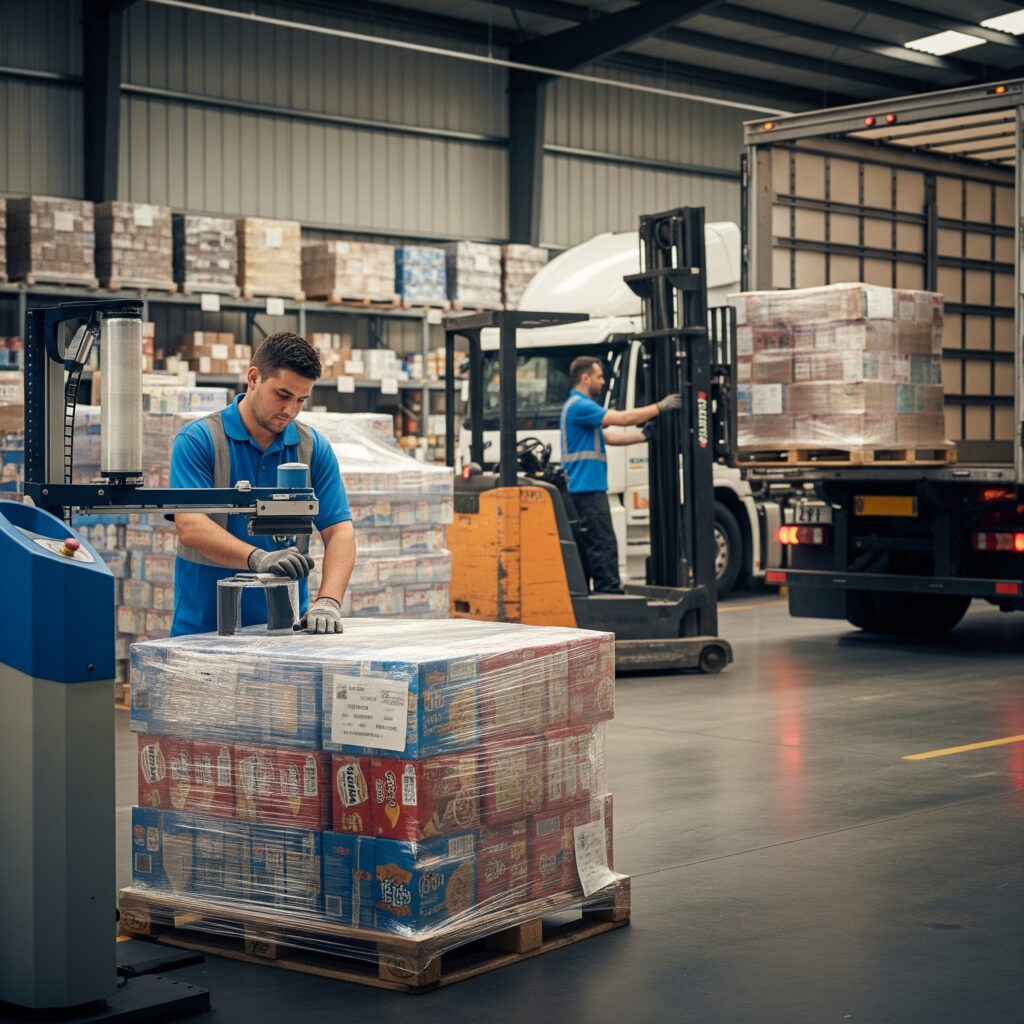
Sustainability, Product Integrity & Network Efficiency
A truly optimized retail supply chain must look beyond the immediate metrics of cost and on-time performance. The evaluation must also include how your logistics strategy impacts your brand reputation, the condition of your product upon arrival, and the efficiency of your connection to global markets.
Factor 4: Meeting Critical Sustainability Mandates
In today’s market, sustainability is no longer a peripheral issue; it is a core commercial requirement driven by your largest customers and the end consumer. For a CPG brand, your environmental scorecard is a crucial part of your business relationship with retailers.
- The Retailer Requirement: North America’s largest retailers—including Walmart, Loblaws, Metro, and Costco—have made major public commitments to reducing their environmental impact. A significant part of this is reducing their “Scope 3” emissions, which includes the transportation of the products they sell. They are actively evaluating suppliers on the carbon footprint of their logistics operations. A supplier who can demonstrate a lower-carbon path to get products to the DC has a tangible advantage over a competitor who cannot. It shows alignment with the retailer’s corporate goals and makes you a more attractive long-term partner.
- The Consumer Demand: The modern consumer is more informed and values-driven than ever before. They are actively looking for brands that demonstrate genuine environmental responsibility. Your supply chain is a huge part of your brand’s story. Being able to authentically state that your products are brought to market using a low-emission transportation network is a powerful marketing tool that builds brand loyalty.
Intermodal shipping offers a direct and quantifiable solution. Shifting long-haul freight from truck to rail can reduce transportation-related greenhouse gas emissions by up to 75%. This isn’t an estimate; it’s a verifiable number that you can include in retailer RFP responses and sustainability reports, satisfying both B2B requirements and B2C brand-building efforts.
Factor 5: Reducing Product Damage & OS&D Claims
Every CPG company is familiar with the costly headache of Overage, Shortage & Damage (OS&D) claims. When product arrives at a retailer’s DC damaged and unsellable, it results in a direct financial loss, administrative burden, and a negative mark on your supplier scorecard. The mode of transport plays a surprisingly large role in this.
- The Risk of Multiple Touches (FTL/LTL): While FTL is a single-touch move, many CPG companies use LTL (Less-than-Truckload) for smaller shipments. LTL freight is often handled multiple times: loaded at your plant, unloaded at a carrier’s terminal, cross-docked onto a long-haul trailer, and handled again at the destination terminal. Each of these “touches” is a new opportunity for a pallet to be dropped, a forklift to pierce a case, or for boxes to be crushed.
- The Smooth, Sealed Journey of Intermodal: Intermodal rail shipping provides a sealed, single-touch journey. Your pallets are loaded and secured in a container at your facility, and that container remains sealed until it is opened at the final destination. This dramatically reduces the risk of handling damage. Furthermore, the physical ride on a train is generally much smoother than a long-haul journey on highways, with fewer sudden stops and less high-frequency vibration. This combination of fewer touches and a smoother ride results in a lower damage rate, meaning more of your product arrives in pristine, sellable condition. This directly improves your bottom line by reducing lost inventory and the costly processing of OS&D claims.
Factor 6: Streamlining Port-to-DC Movements for Imports
A huge portion of consumer goods sold in Canada are manufactured overseas and arrive in ocean containers at major ports like Vancouver, Prince Rupert, or Montreal. The journey from the port to your inland distribution center is a critical, often congested, link in your retail supply chain.
- The Inefficiency of Port-Area Transloading: A traditional method for handling imports is to truck the ocean container to a nearby warehouse, unload all the contents (a process called “transloading” or “destuffing”), and then reload the freight into a domestic 53-foot truck trailer for the inland journey. This process is expensive, labour-intensive, adds a significant risk of product damage through the extra handling step, and contributes to the already severe truck congestion in and around major port districts.
- The Intermodal “Land Bridge” Solution: Intermodal shipping provides a far more efficient and cost-effective alternative. The intact ocean container can be lifted directly from the vessel or port storage area onto a train. This train then acts as a “land bridge,” moving your container seamlessly across the country to an inland rail terminal in a major hub like Calgary, Edmonton, or the Greater Toronto Area. From there, it’s just a short, final-mile truck delivery to your distribution center. This strategy eliminates the entire transloading step, reducing cost, minimizing handling and damage risk, and bypassing the bottlenecks at the port, getting your imported goods into your inventory network faster and more reliably.
The Strategic Decision Framework
Having analyzed the performance of each mode across these critical factors, we can now synthesize this information into a practical decision-making framework. The goal is not to declare a single “winner,” but to build a smarter, more resilient, and more profitable retail supply chain by leveraging the distinct strengths of each mode.
Factor 7: The Hybrid Model – The Optimal CPG Logistics Strategy
The most common mistake in logistics planning is falling into an “all-or-nothing” mindset. The reality is that for a supply chain as complex and varied as that of the CPG industry, the most effective and sophisticated strategy is a hybrid model that intelligently integrates both Full Truckload (FTL) and intermodal rail shipping.
Think of your logistics network as a well-balanced financial portfolio. A prudent investor doesn’t put 100% of their funds into a single high-risk stock or a single low-yield bond; they diversify to manage risk and optimize returns across different market conditions. A world-class retail supply chain operates on the same principle. You allocate your freight to the mode that provides the best return—whether measured in cost savings, speed, or reliability—for that specific situation.
In this optimal hybrid model, each mode has a clearly defined and strategic role:
- Full Truckload (FTL) as the “Agile & Responsive” Tool: Trucking remains an absolutely essential component of any CPG logistics network. Its strength lies in its agility and go-anywhere flexibility. In a hybrid model, you leverage FTL for its tactical advantages. It is the perfect solution for:
- Short-Haul Regional Distribution: For moving products from your regional Distribution Center (DC) to local retail stores within a few hundred kilometers.
- Urgent “Hot Shot” Shipments: When a major retailer is facing an unexpected out-of-stock situation on a key product, the raw speed of a dedicated truck is the necessary tool to solve the problem immediately.
- Direct-to-Store Deliveries in Remote Areas: For servicing retail locations in smaller towns or regions that are not located near a major rail terminal.
- Intermodal Shipping as the “Strategic & Efficient Backbone”:Intermodal shipping forms the core infrastructure of your national supply chain. It is the cost-effective, reliable, and scalable workhorse for all your planned, high-volume freight movements. Its role is strategic and foundational. It is the ideal solution for:
- Plant-to-DC Replenishment: For all your high-volume, long-haul shipments moving from your manufacturing facilities to the massive RDCs of your major retail partners.
- Coast-to-Coast Inventory Balancing: For efficiently moving stock from your eastern DCs to your western DCs (and vice-versa) to maintain healthy inventory levels nationwide.
- Inbound Import Logistics: For creating an efficient “land bridge” to move imported goods from the Port of Vancouver or Montreal directly to your inland distribution network.
By adopting this balanced, hybrid approach, you stop trying to force one tool to do every job. You no longer overpay for trucking on predictable, long-haul lanes where intermodal is the clear financial winner, and you don’t try to force intermodal on short-haul, urgent shipments where trucking excels. This strategic allocation of freight is the hallmark of a truly optimized and modern retail supply chain.
Making the Strategic Choice for Your Supply Chain
The choice between intermodal shipping and full truckload is not about crowning one mode as universally superior. It is about making a sophisticated, data-driven decision to deploy the right mode, for the right lane, to achieve a specific business objective. For the high-stakes world of CPG and retail logistics, where success is defined by margin protection, on-time performance, and a resilient network, this strategic approach is essential.
A supply chain that relies on a single methodology is inherently fragile. A modern, profitable, and sustainable supply chain must be multi-modal. By understanding the analytical framework of cost, predictability, capacity, and sustainability, you can move beyond simple freight booking and begin to architect a logistics network that provides a true competitive advantage.
The theory is clear. The next step is to move from general analysis to specific data.
Contact our CPG logistics experts for a complimentary, no-obligation Lane Analysis. We will compare the all-in costs and transit performance of intermodal vs. trucking on your key routes, giving you the data you need to make a powerful business case for optimization.
Request Your Complimentary Lane Analysis Today

Additional Resources:
Intermodal Rail Shipping with RailGateway
Intermodal Rail Shipping for Retail & Consumer Packaged Goods
Retail Council of Canada (RCC)
